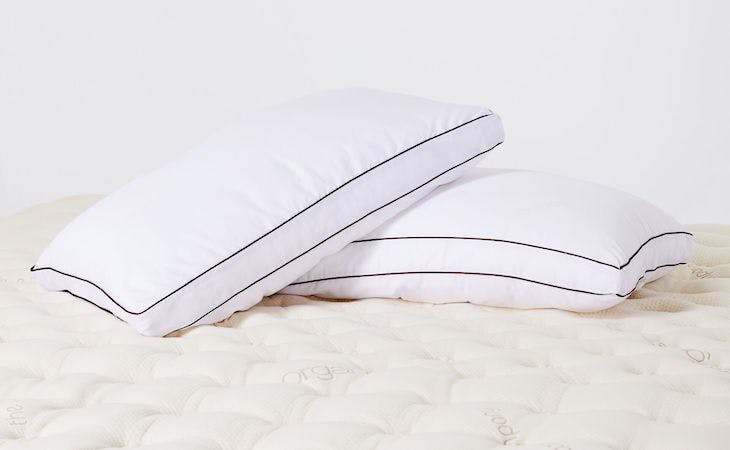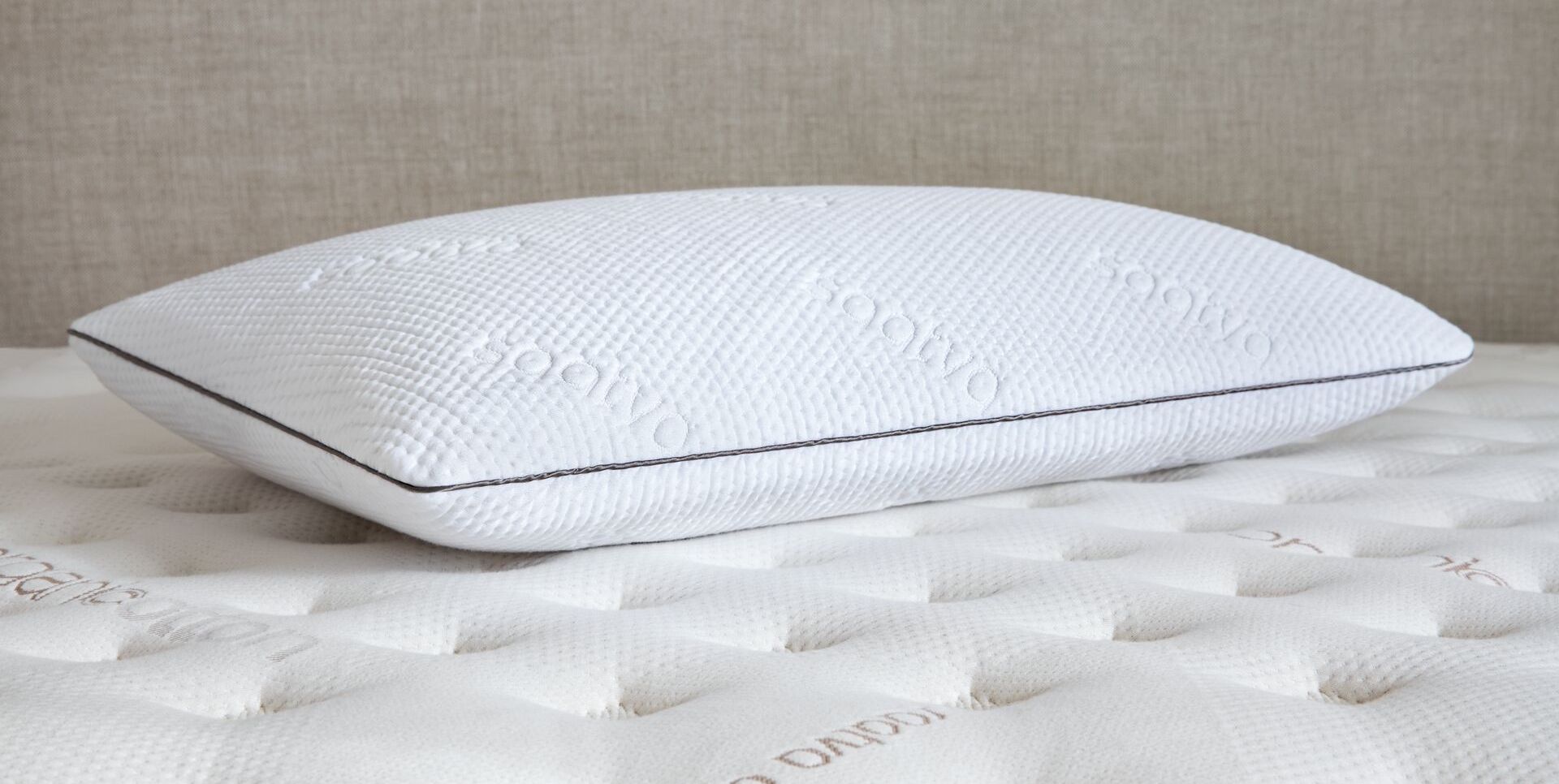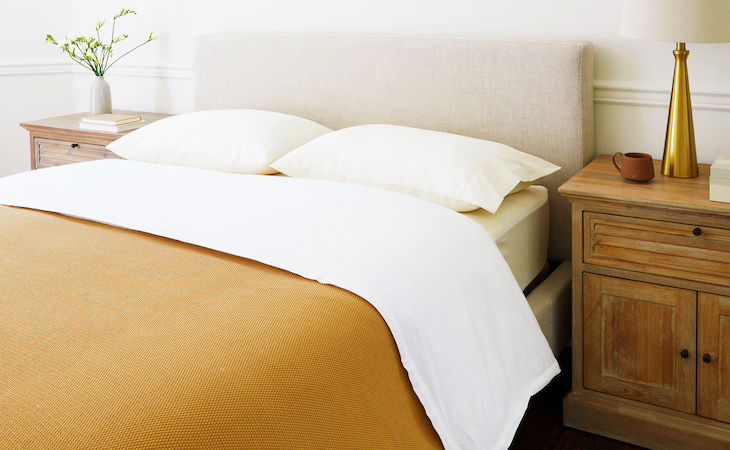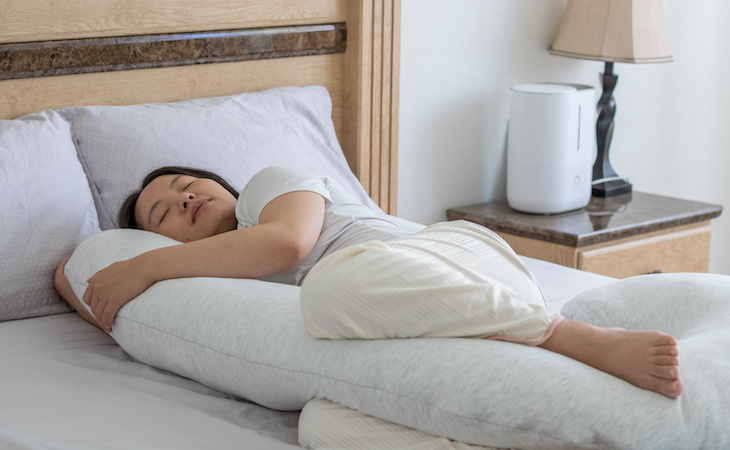We’re so sorry to be the ones to share this gross information, but you’ll probably be glad we did. Here goes: After a couple of years of daily use, up to 30% of a pillow’s weight will be made up of dead skin cells, dust mites, and their feces, according to a study by a researcher at St. Bartholomew’s Hospital in London.
Dust mites—which love to dine on dead skin—can trigger breathing problems and asthma in people who are allergic to them. Skin oils, saliva, and sweat also build up in the cover and filling of your pillow, bringing stains and odors with them. No wonder allergists and cleaning experts recommend cleaning your pillows twice a year. Here’s how to do it.
How to wash your pillow based on the type of pillow
There are so many types of pillows on the market, it can be hard to keep track of the best maintenance and care routine for each of them. And while it’s important to have clean pillows, it’s also important to have usable pillows—that’s why it’s key to follow the washing instructions provided by the manufacturer.
There are a few common types of pillows on the market, each with its own deep cleaning routine. These pillow types include:
- Feather pillows
- Memory foam pillows
- Buckwheat pillows
Feather pillow maintenance
Both synthetic feather pillows and down pillows can be machine washable as long as you use the delicate wash cycle. Most delicate cycles default to cool or cold water, but you can use warm water if your pillow needs a deeper clean.
Some cleaning experts recommend a detergent-boosting washing powder to properly clean a pillow, but we recommend using a liquid, mild detergent or soap solution for the best clean possible. We also recommend running the pillows through a second rinse cycle to make sure all the soap is gone. This is especially smart advice for down pillows since soap residue can cause feathers to clump.
To dry your feather pillows, you can simply throw them in the dryer on a low heat setting. You can add some tennis balls or dryer balls as an agitator to prevent clumping. Check the pillows after 30 minutes and every 15 minutes thereafter until they are completely dry.
Watch this video for more tips on washing your feather pillow:
Memory foam pillow maintenance
If you have a foam pillow, be double sure to check the care labels—some manufacturers recommend against washing because wet foam can tear. In that case, experts recommend dabbing any dirty spots with lightly soapy water, rinsing with a damp cloth, then air drying.
For washable foam, we suggest you hand wash them by soaking the pillows in a tub of warm water with a little detergent. Squeeze the suds through the foam, then rinse, rinse, rinse, and squeeze out excess water.
Foam pillows can melt in a dryer, so always air-dry those. Let them dry flat on a ventilated surface, preferably outside on a warm, sunny, or breezy day to speed up the drying process.
Buckwheat pillow maintenance
Buckwheat pillows have a unique maintenance routine. They can’t go in water or be cleaned with laundry detergent. If you soak buckwheat hulls in water, that will ruin them. You also should never put buckwheat pillows in a dryer.
Instead, the best way to wash your buckwheat pillow is to remove the filling, put it in a bowl, and set it in the sun. This can help eliminate odors from inside your pillow, reduce mildew, and extend the life of your pillow. When it comes to the pillow cover and shell casing, you can wash those in cool water with mild detergent.
Other best pillow washing tips: How to make your pillows last longer
Pillows can be incredibly hard to maintain without ruining, but following the proper maintenance routine can help extend the life of your pillows by quite a bit. We’ve rounded up our best advice for keeping your pillows in tip-top shape for as long as possible:
- Be careful using a washer: Pillows are infamous for throwing washers off-balance, but there’s an easy fix for that. If you have a top-loading machine, throw in a second pillow to keep your washer balanced. If you have a front-loading machine, meanwhile, throw in a few bath towels to keep the washer balanced.
- Spot-clean your pillow: Since you’re going to cover your pillow with a fresh, clean pillowcase at the end of this process, spot-cleaning is optional. That said, if you want to get rid of dark blotches from perspiration, saliva, or blood, you can pre-treat the stain just as you would a stain on your clothes.
- Fluff your pillows after drying: Especially with down or synthetic down pillows, you should fluff them after drying. The drying process can cause a lot of the feathers to clump up, but you can avoid this by fluffing your pillows during and after the drying process.
The bottom line: Always pay close attention to the pillow maintenance instructions on the care label. Ideally, you’ll want to clean your pillow two to four times a year to keep it in the best condition possible.
Frequently asked questions
Can I put my pillows in the washing machine?
This depends on the type of pillow you have and what the manufacturer’s care instructions say. Most feather pillows and down alternative pillows can be placed in the washing machine. Always double-check the maintenance instructions on your pillow to see if it can handle being washed in the washer on a gentle cycle.
How often should I replace my pillows?
Just because you clean your pillow regularly doesn’t mean it’ll last forever. There’s no hard and fast rule on how often you should replace your pillow, but most experts suggest swapping yours out for a new one every one to two years.
How can I get rid of dust mites on my bed pillows?
If you’re allergic to dust mites, then you might want to give your pillows a little extra attention. Placing them in the sun or running them through the dryer monthly can help get rid of dust mites and other allergens.
Shop high-quality and long-lasting pillows with Saatva
Finding the proper care routine for your pillow is super-important if you want it to last for a long time. Proper maintenance helps ensure your pillow stays fluffy and comfortable for longer.
Saatva is here to help you find the best pillow for your sleep style. We offer a range of high-quality, easy-to-maintain pillows to suit different sleep habits and preferences. Choose from our
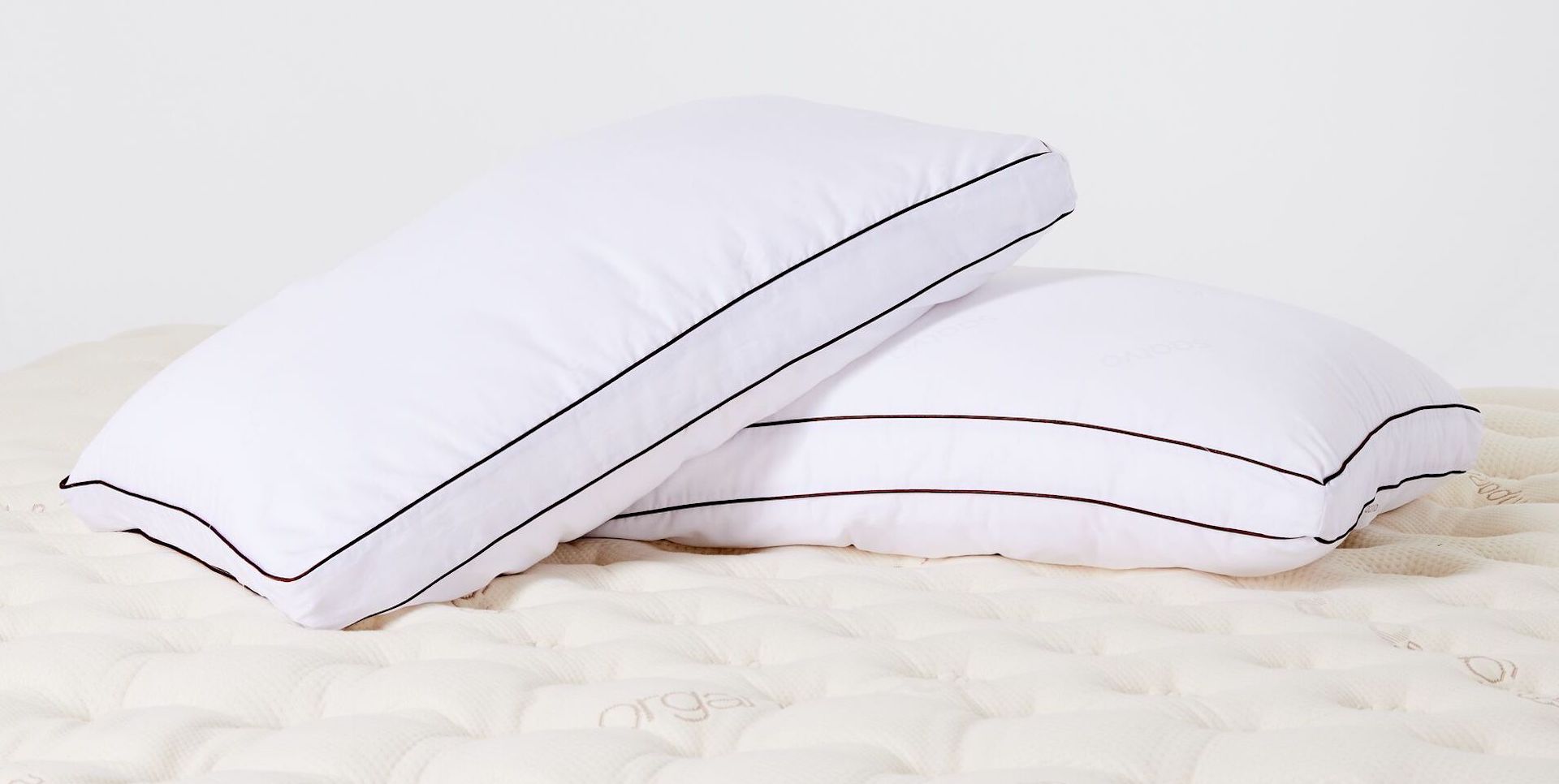
Hotel-quality comfort with responsive & ultra-breathable support
,
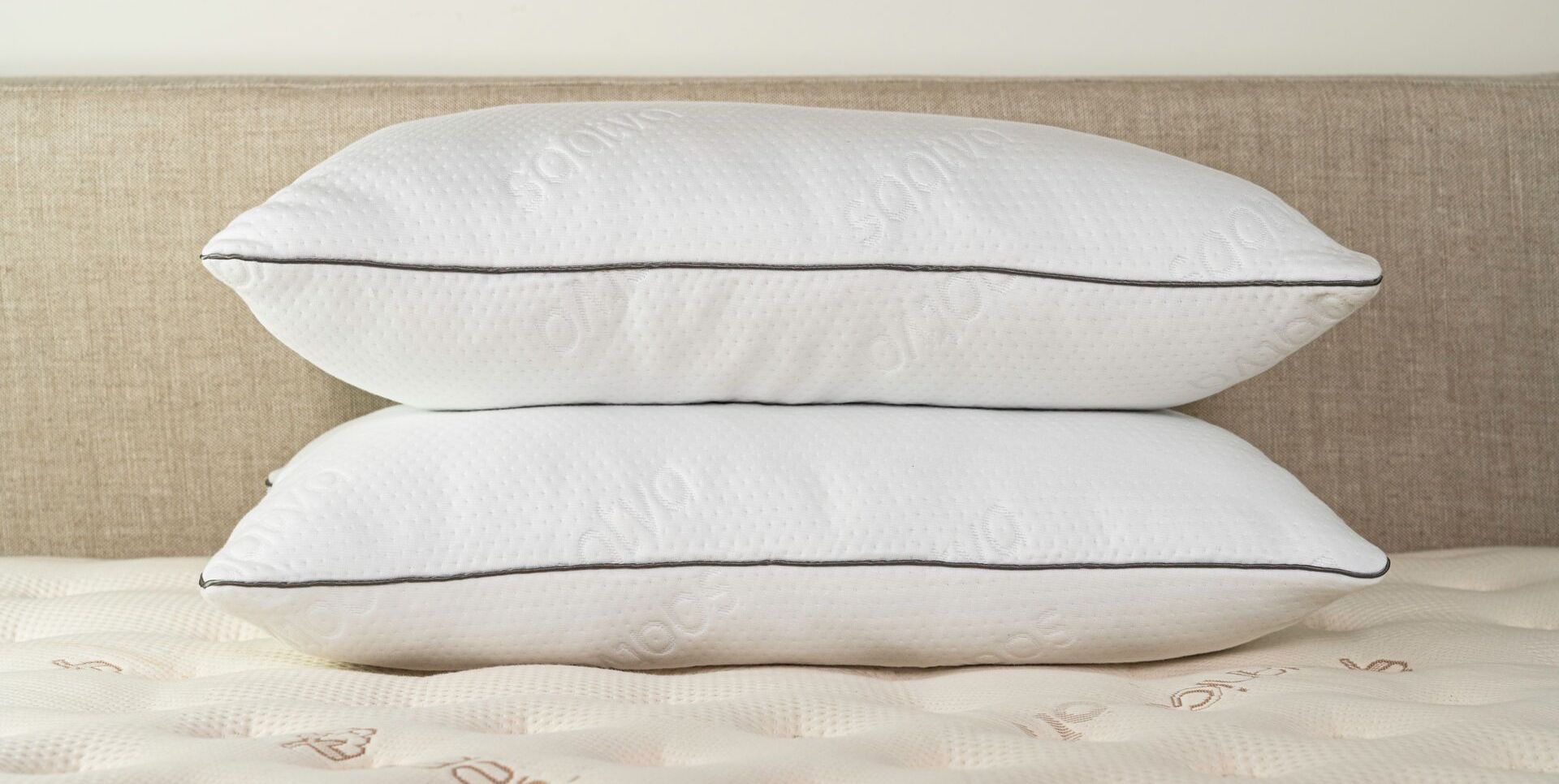
Cooling comfort and contouring support ideal for side sleepers
, and
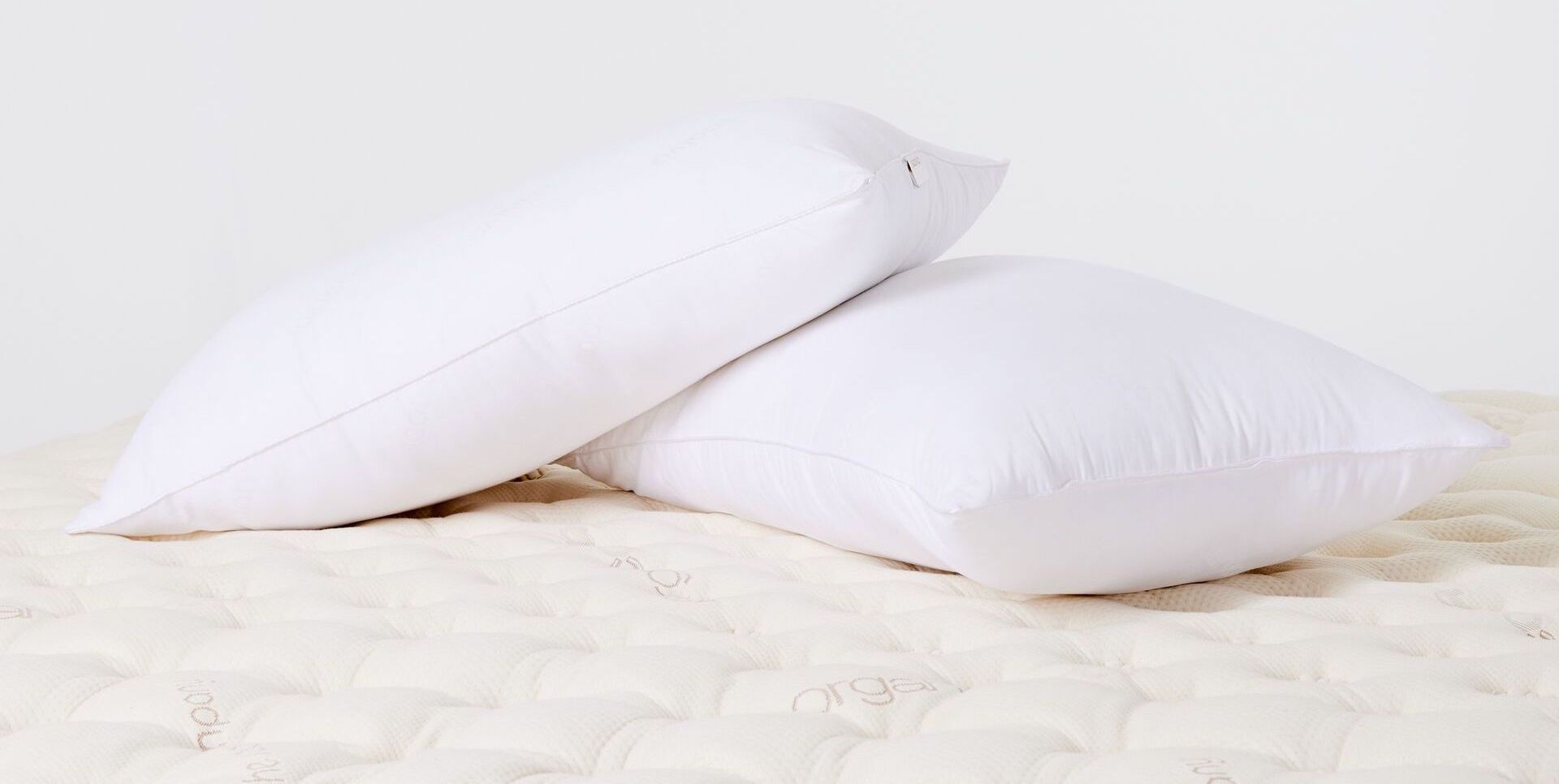
Hypoallergenic with a plush and airy feel that’s perfect for cuddling
, all of which are made with soft, breathable materials that are simple to clean.
Check out our selection of mattresses, pillows, and other bedding accessories to optimize your bedroom for sleep. We have everything you need to make your bed as inviting and comfortable as possible.

